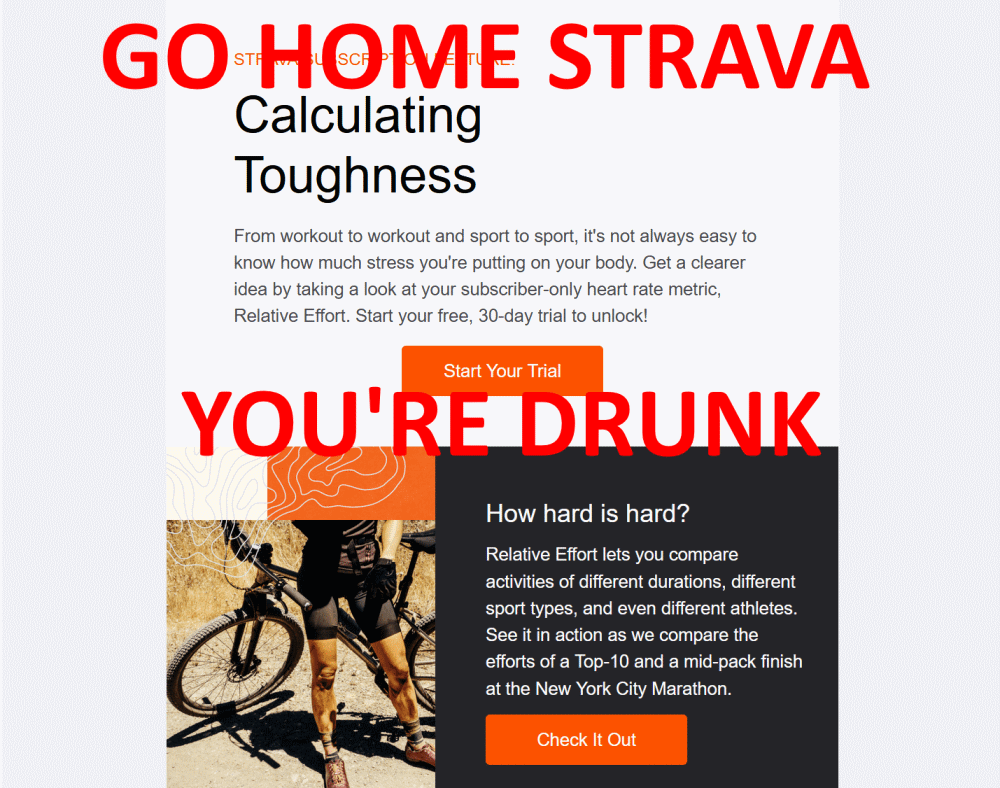Please, just, stop, Strava. Those things you’re claiming that you can do with relative heart rate data, are exactly what you can’t do with relative heart rate data, and exactly why power meters exist. Heart rate is a great way to know how your body is doing on a given day (i.e. am I dehydrated, tired, under/over caffeinated, etc.), but you simply cannot use it to compare efforts for that reason. Too many variables go into the number for it to be anything more than what it is; and that’s just for you, in a single sport. Trying to expand that flawed model to other sports, or across people, is absolutely ludicrous.
Taking a look at a recent group ride I participated in (I’m bottom right, with no relative effort number), we can see that the relative effort numbers are all over the place. How would Strava have us compare these numbers? Was the ride really more than 2x the pain for bottom-left compared to top-left?
Does that mean that heart rate data is useless? No, not at all, just that you have to understand the limitations, and embrace the value intrinsic in the data, instead of making something up to try to sell subscriptions (cough, Strava). By itself, heart rate is very useful, in context; add in a power meter and it’s even more useful because they tell us different things. Personally, I prefer to pace off of heart rate + power (instead of just power) when I go for a long ride exactly because of what it tells me about the state of my body. When the zones align, all is good. When they don’t, something needs fixing; water, calories, etc.
One interesting artifact of their implementation is subscribers can only compare themselves to other subscribers. So because I don’t pay Strava to make stuff up around my effort level, subscribers can’t see Strava’s guess around my effort level; which oddly makes the smarter play to not subscribe? Or, maybe the smarter play is to lie about my max heart rate, so everything looks super easy :).

